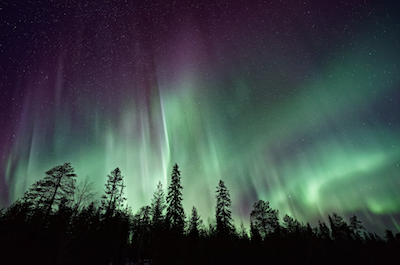
Best three things to bring or prepare for a trip to The Great Blue Hole, Belize
Do you have a suggestion for one of the top 3? "Best three things to bring or prepare for a trip to The Great Blue Hole, Belize"

Best Three Things to Bring or Prepare for a Trip to The Great Blue Hole, Belize
1. Snorkeling Gear
One of the best ways to explore the stunning underwater world of The Great Blue Hole is through snorkeling. Bringing your own snorkeling gear ensures a comfortable and personalized experience. Make sure to pack the following items:- Snorkel mask: Choose a mask that fits well and provides a clear view of the underwater scenery.
- Snorkel tube: Opt for a snorkel tube with a comfortable mouthpiece that allows easy breathing while exploring.
- Fins: Invest in a pair of fins that fit properly and provide efficient propulsion through the water.
- Rashguard or wetsuit: Depending on your preference and the water temperature, consider bringing a rashguard or wetsuit to protect your skin and keep you warm.
2. Underwater Camera
Capture the breathtaking beauty of The Great Blue Hole by bringing an underwater camera. Whether you prefer a compact waterproof camera or a specialized underwater housing for your DSLR, having the right equipment allows you to immortalize your experience. Some recommended options include:- GoPro Hero9 Black: This versatile action camera is waterproof and offers high-quality photo and video capabilities, perfect for capturing the vibrant marine life and stunning geological formations.
- Olympus TG-6: Designed specifically for underwater photography, this compact camera offers excellent image quality, various shooting modes, and is waterproof up to 50 feet.
- Canon PowerShot G7 X Mark III with underwater housing: If you prefer using a DSLR, this camera paired with a compatible underwater housing allows for professional-grade photography while exploring the depths.
3. Sun Protection Essentials
When embarking on a trip to The Great Blue Hole, it's crucial to protect yourself from the intense Caribbean sun. Here are some essential items to bring:- Sunscreen: Choose a broad-spectrum sunscreen with a high SPF to shield your skin from harmful UV rays. Apply it generously and reapply frequently.
- Sun hat: A wide-brimmed hat provides shade and helps protect your face, neck, and ears from sunburn.
- Sunglasses: Opt for sunglasses with UV protection to shield your eyes from the bright sunlight reflecting off the water.
- Lightweight clothing: Pack lightweight, breathable clothing that covers your arms and legs to minimize sun exposure.
When considering a trip to The Great Blue Hole, it's important to research and plan accordingly. Here are a few factors to consider:
1. Weather conditions: Check the weather forecast for Belize and The Great Blue Hole region to ensure you choose the best time to visit when conditions are favorable for snorkeling and diving.
2. Physical fitness: Assess your physical fitness level to determine if you're ready for the physical demands of snorkeling or diving in The Great Blue Hole.
3. Safety precautions: Familiarize yourself with safety guidelines and regulations for snorkeling or diving in The Great Blue Hole. Be aware of potential risks and how to mitigate them.
4. Budget considerations: Determine your budget for the trip, including transportation, accommodation, activities, and equipment rental or purchase.
5. Local tour operators: Research reputable tour operators who offer guided trips to The Great Blue Hole. Read reviews, compare prices, and consider their experience and safety record.
By considering these factors and adequately preparing, you can ensure a memorable and enjoyable trip to The Great Blue Hole.
Other Things to Consider
When planning a trip to The Great Blue Hole, there are a few additional aspects to consider:
1. Scuba Diving Certification: If you wish to explore the depths of The Great Blue Hole through scuba diving, ensure you have the necessary certification and experience. Check with local dive centers for requirements and options.
2. Travel Insurance: It's advisable to obtain travel insurance that covers activities like snorkeling or diving, as well as any unforeseen circumstances that may arise during your trip.
3. Environmental Conservation: The Great Blue Hole is a natural wonder, and it's crucial to respect and preserve its ecosystem. Follow sustainable practices, such as not touching or damaging coral reefs, and avoiding littering.
4. Local Culture: Immerse yourself in the local culture of Belize by exploring other attractions, trying traditional cuisine, and interacting with the friendly locals.
By considering these aspects, you can make the most of your trip to The Great Blue Hole and ensure a safe and enjoyable experience.
Methodology for Evaluating The Great Blue Hole
Evaluating The Great Blue Hole involves considering several factors to determine its worthiness as a travel destination. The methodology for evaluating The Great Blue Hole could include:
1. Natural Beauty: Assessing the geological formations, marine life, and overall aesthetic appeal of The Great Blue Hole.
2. Accessibility: Evaluating the ease of reaching The Great Blue Hole, including transportation options and proximity to major cities or tourist hubs.
3. Recreational Activities: Considering the range of activities available, such as snorkeling, diving, and boat tours, and evaluating their quality and safety.
4. Environmental Impact: Assessing the efforts made to preserve and protect the environment, including conservation initiatives and sustainable tourism practices.
5. Visitor Experience: Gathering feedback from visitors regarding their overall satisfaction, the quality of services, and the value for money.
By analyzing these factors, travelers can make informed decisions about visiting The Great Blue Hole and determine if it aligns with their preferences and expectations.
Questions About The Great Blue Hole
1. What is the depth of The Great Blue Hole?
The Great Blue Hole has a maximum depth of approximately 410 feet (125 meters).
2. Can non-swimmers visit The Great Blue Hole?
Non-swimmers can still enjoy the beauty of The Great Blue Hole by opting for boat tours or snorkeling with a life jacket.
3. Are there age restrictions for snorkeling or diving in The Great Blue Hole?
Age restrictions may vary depending on the tour operator and the specific activity. It's advisable to check with the chosen tour operator for any age limitations.
4. How long does it take to reach The Great Blue Hole from mainland Belize?
The boat ride from mainland Belize to The Great Blue Hole typically takes around 2 to 2.5 hours, depending on weather conditions.
5. Are there any accommodations near The Great Blue Hole?
As The Great Blue Hole is located offshore, there are no accommodations directly nearby. However, there are various lodging options available in nearby islands or mainland Belize.
6. Can I visit The Great Blue Hole year-round?
Yes, The Great Blue Hole can be visited year-round. However, the best time to visit is during the dry season (November to April) when weather conditions are generally more favorable.
7. Are there any health risks associated with diving in The Great Blue Hole?
Diving in The Great Blue Hole carries certain risks, including decompression sickness. It's essential to have the necessary diving certifications, experience, and follow safety guidelines to minimize these risks.
8. Are there any guided tours available for The Great Blue Hole?
Yes, several tour operators offer guided tours to The Great Blue Hole, providing snorkeling, diving, and boat tour options. It's recommended to book a tour in advance to secure your spot.
Overall, The Great Blue Hole offers an incredible natural wonder to explore, and with proper preparation and consideration, visitors can have an unforgettable experience in this mesmerizing underwater sinkhole.
What's Next?
After familiarizing yourself with the best things to bring and prepare for a trip to The Great Blue Hole, start planning your adventure! Research reputable tour operators, check availability, and book your preferred activities in advance. Consider creating an itinerary that includes other attractions and activities in Belize to make the most of your trip. Don't forget to pack your essentials, including snorkeling gear, an underwater camera, and sun protection items. With proper planning and enthusiasm, you're on your way to an extraordinary journey in The Great Blue Hole!
If any these recommendations were useful to you, please help support us by clicking the "tweet this" button below.
Tweet this


